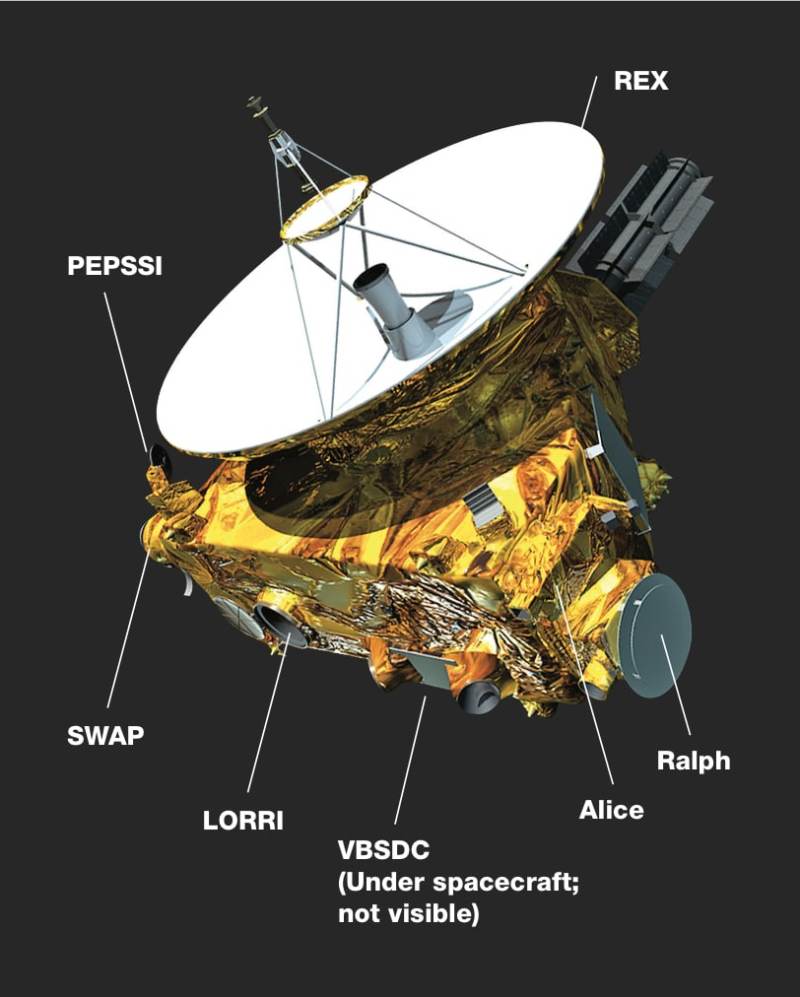I remember in 2015 when NASA’s New Horizons spacecraft sent back the first image of Pluto I was amazed and awestruck at the stunning detail of this distant world. As the days went by we got better and better images as the spacecraft got closer. We could see the huge glacier, the ice mountains and the unusual landforms on the surface of this icy dwarf planet. It was a long trip for New Horizons out to Pluto which was launched on 19 January 2006. It did a flypast around Jupiter in February 2007 and collected some useful data while getting a gravity assisted boost for the long journey to Pluto. This made it the fastest spacecraft ever launched getting to about 80,000 kilometres per hour for the long trip To the Kuiper Belt. Since the Pluto encounter in 2015 New Horizons has been “sleeping” and will wake up next year to continue examinations of the Kuiper Belt so we can understand a bit more about what is going on beyond Pluto.

The spacecraft was launched packed full of instruments and included a visible and infrared imager and spectrometer which provides color, composition and thermal maps and is called Ralph. There’s also an ultraviolet imaging spectrometer called Alice which analyzed the composition and structure of Pluto’s atmosphere and looked for atmospheres around Charon and will do the same for other Kuiper Belt Objects (KBOs). REX (Radio Science EXperiment) is for measuring atmospheric composition and temperature and LORRI (Long Range Reconnaissance Imager) is a telescopic camera which sent back some of those amazing photographs of both Pluto and Charon in 2015. There’s also an instrument called SWAP (Solar Wind Around Pluto) which is a solar wind and plasma spectrometer that looks at Pluto’s interaction with the solar wind. Then there’s the PEPSSI (Pluto Energetic Particle Spectrometer Science Investigation) which is an energetic particle spectrometer for measuring the composition and density of plasma (ions) escaping from Pluto’s atmosphere. Finally the VBSDC (Venetia Burney Student Dust Counter) measures the space dust peppering New Horizons during its voyage across the solar system.

With it’s instruments all ready, New Horizons is speeding towards its next target, the newly named Ultima Thule, formerly 2014 MU69. This object is about 1.6 billion kilometres beyond Pluto in the Kuiper Belt. New Horizons is due to get up close and personal to Ultima Thule on 1 January 2019, plenty of time to recover from New Years celebrations. New Horizons is so far away that it takes nearly 6 hours for a signal from Earth to reach it.

The spacecraft’s mission was extended after the Pluto flypast to encompass objects in the Kuiper Belt and NASA hopes that New Horizons will observe around 24 Kuiper Belt Objects (KBO), dwarf planets and centaurs. Centaurs are KBOs that are in unstable orbits and leave the Kuiper Belt to cross the orbits of the large outer planets. The Kuiper Belt extends from beyond Neptune at about 30 AUs to around 50 AUs and it’s full of rocks and icy bodies and a few dwarf planets. Over 100,000 KBOs are thought to exist over 100 kilometres in diameter. Some of the larger objects in the Kuiper Belt have been named, other than Pluto and Charon, and these include Eris, Makemake, Haumea and Quaoar. It is also thought that Neptune’s only moon, Triton, was captured by the planet from the Kuiper Belt.

So look out on 1 January next year as New Horizons encounters the most distant object ever visited.














